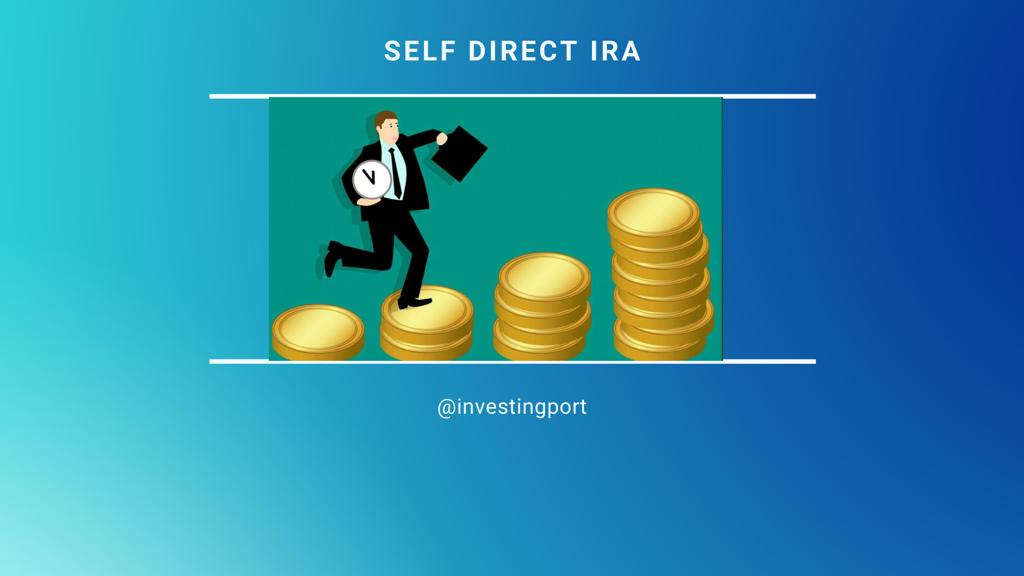What is a Self-Directed IRA (SDIRA)?
- Posted on August 30, 2020
- Financial Terms
- By Glory

A self-directed Individual retirement account or SDIRA is a form of individual retirement account (IRA) that allows the owner to hold various alternative investments that are normally not allowed in regular IRAs. The account is usually administered by a custodian or trustee, and directly managed by the account holder, hence the name “self-directed”.
Self-Directed IRA (SDIRA) Explained
A self-directed IRA (SDIRA) is both available as a traditional IRA which allows the owner to make tax-deductible contributions, and as a Roth IRA which allows the owner to make tax-free distributions. SDIRAs are best for expert investors who understand how self-directed IRAs work and the best alternative investments to include in a diversified tax-advantaged account.
The major difference between SDIRAs and other types of IRAs is the diversity of investments the accounts can hold. Regular IRAs are only permitted to hold securities like stocks, bonds, mutual or exchange-traded funds (ETFs) and, certificates of deposits. SDIRAs are able to hold a diversity of assets including private placements, tax lien certificates, precious metals, real estate, commodities, limited partnerships, and other alternative investments.
When handling an SDIRA, it will be required of the owner to possess greater initiative and due diligence.
Traditional SDIRA vs. Roth SDIRA
Self-directed IRAs come in both traditional and Roth forms. However, both account types have different eligibility requirements, tax treatment, distribution rules, and contribution guidelines.
The major differentiating factor between traditional IRAs and Roth IRAs is the method of paying taxes. Traditional IRAs require that you pay taxes on your contributions and earnings during withdrawal on retirement, while you get an upfront tax break. While Roth IRAs do not give you upfront tax breaks during contribution but allows your contributions and earnings to grow tax-free.
Other differences between the two account types include:
Income limits: A traditional IRA has no income limits, but a Roth IRA requires a certain amount to open or contribute to a Roth account.
Required minimum distributions: Traditional IRAs require that you start taking RMDs at age 72. While Roth IRAs have no required minimum distribution limits all through the owner’s lifetime.
Early withdrawals: Traditional IRAs allow penalty-free withdrawals starting at age 59 ½ early withdrawals attract penalties. While Roth IRAs allow the owner to withdraw their contributions at any time and for whatever reason with no penalties.
NB: These same rules apply to the traditional and Roth versions of the self-directed IRAs. Also, SDIRAs must abide by the same general IRA contribution limits for each year. (For 2020: $6,000 per year, or $7,000 for age 50 and above).
How to Open an SDIRA
To open a self-directed IRA you will need the assistance of a qualified IRA custodian with a specialty in that type of account. Most IRA providers only allow you to open a regular IRA, that is, traditional or Roth. Again, not all SDIRA custodian offers the same type of investments. Therefore, if you are interested in a particular type of investment or assets like tax lien certificate or gold bullion, you have to ensure that they are included in the SDIRA custodian’s offerings.
Because the accounts are self-directed, SDIRA custodians are not permitted to give financial advice. This is another reason why traditional investment firms, brokerages, and banks do not offer SDIRA services. If you require financial services while self-directing your SDIRA, you should make plans on getting a separate financial advisor.
Investing in SDIRAs
Roth SDIRAs offer investors a wide variety of potential investments. This is in addition to regular investments such as stocks, bonds, cash, mutual funds, and money market funds. It allows you to hold assets that aren’t typically included in a retirement portfolio such as tax liens and investment real estate.
The Internal Revenue Service, however, prohibits some specified investments in self-directed IRAs such as life insurance, S Corporation stocks, and any other type of investment that constitutes a prohibited transaction and collectibles.
Collectibles are made up of a wide variety of items including artwork, antiques, jewelry, stamps, coins, alcoholic beverages, memorabilia, etc. This also includes the type of gold that a Roth SDIRA can hold.
Common SDIRA Risks
Complicated rules: SDIRA rules are clearly stated, a violation of any of the rules can cause the entire account to be distributed to the owner which will also attract payment of all taxes and penalties. Before opening and SDIRA be sure to properly understand the rules that apply for the account and specific assets held in the account.
Due diligence: Since SDIRAs are self-directed you will be responsible to do your own due diligence. SDIRA custodians are not permitted to offer any financial advice but you can hire the services of a good financial advisor if you need one.
Fees: Generally, SDIRAs fee structure is complicated. Its charges include a one-time establishment fee, first-year annual fee, annual renewal fee, and investment bill paying fees. These fees all cut into your earnings.
Complicated exit: It is easier to get out of regular IRAs that hold stocks, bonds and mutual funds. All that’s required is to place a sell order with your broker, and the market handles the rest. Whereas, with some SDIRA investments the process of exiting is more complex, as it may take a while to find the right buyer for some assets.


Be the first to comment!
You must login to comment